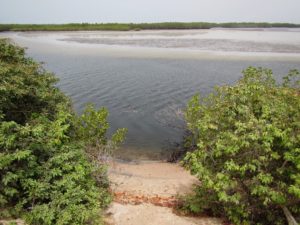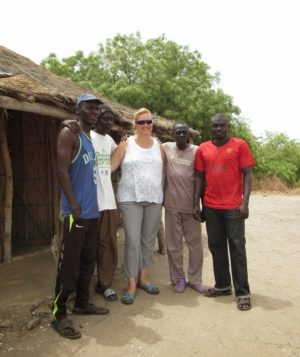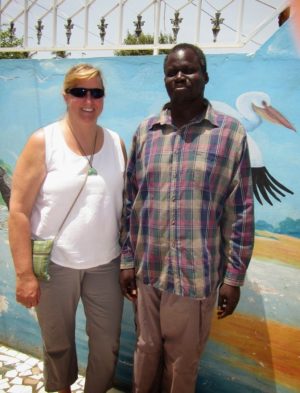Senegal: Quick trip to Delta Saloum
Here’s the team I met (I later also met the director in his office). The guy in the brown shirt was absolutely thrilled to hear I had proved (using stable isotope analyses) that the manatee from their park had eaten mollusks in addition to plants. His grandfather was a manatee hunter, and he remembers as a child his grandfather telling him about the manatees eating clams, but when he tells tourists that story, they tell him he’s mistaken. He was so happy that there is now scientific proof! During our meeting we decided we’d make a manatee information plaque for the park. Two years ago they buried the dead manatee to clean the skeleton, so we’ll dig it up and set up the bones for a manatee educational display.

At the edge of the camp area the staff showed me a freshwater spring (it’s not visible here but is just in front of the small beach in this photo). There are hundreds of freshwater springs in Delta Saloum, which allow manatees to live in a saltwater environment but drink the freshwater they need to survive.

On our boat trip back from Bamboung to the mainland I collected samples from three species of mangroves, which I’ll add to my stable isotope analyses to determine if manatees in this area are eating them. In all likelihood they are, but stable isotope work will allow us to see whether or not the mangrove’s signature is found in the manatee samples.
It’s great to reconnect with folks in Senegal and get manatee fieldwork started again! Lots more to come…







amazon
September 22, 2016 at 3:36 pmnice